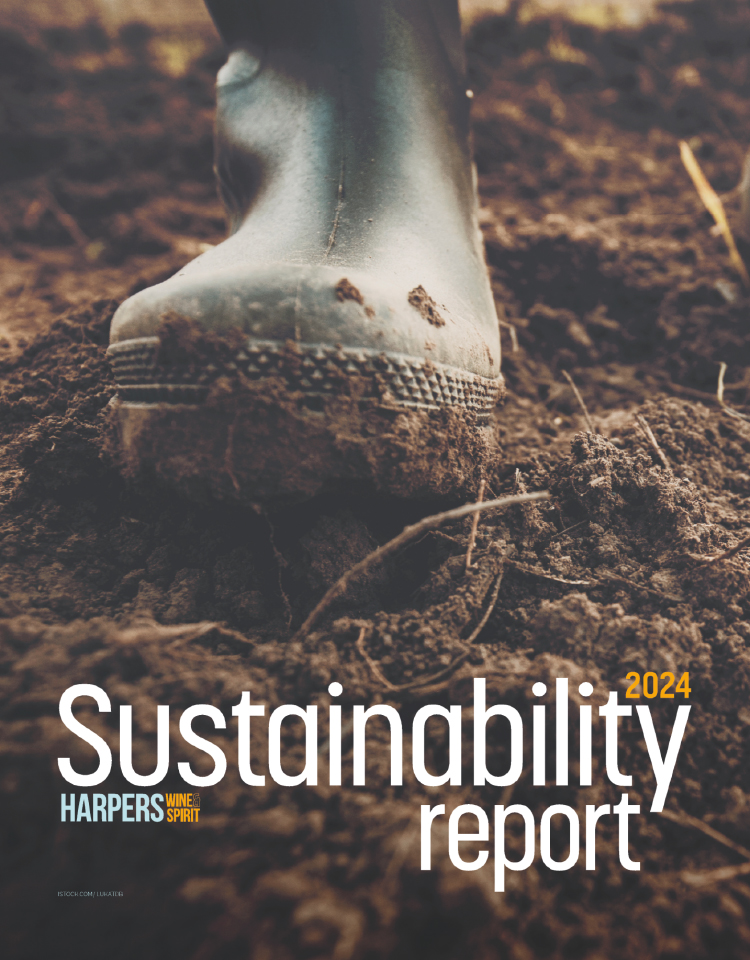
Leading the charge for sustainability in the boardroom
Harpers’ recent Folding Sustainability into the Boardroom DNA webinar delivered great insights into advancing the cause.
The Panel
Andrew Gale, technical and sustainability director, Enotria&Coe (Charter Champion)
George Kyle, head of ESG, C&C group/Bibendum (Charter Champion)
Kim Wilson, MD, North South Wines (Charter Champion)
Jeremy Rockett, director, Rockett Science (sustainability consultant)
Andrew Catchpole, moderator and editor, Harpers Wine & Spirit
Why is it important as a company to embrace sustainability?
Kim Wilson: If you look at the nature of the wine trade, the bulk of what we do is shipping very heavy bottles around the world. We’re seeing extreme weather and changes within that. We’re selling a product that technically isn’t responsible, but we need to make it as responsible as possible and that’s hugely important for us to do.
Andrew Gale: For me, there’s often a common misconception about sustainability – people think it’s just about climate change and the environment. But in practice, it means looking at social, environmental and economic issues. And it’s a balance between all of that. And the common myth about sustainability is that it’s sustainability versus profitability. But there’s research to suggest that businesses with better ESG scores actually record stronger financial performance. So as well as doing the right thing, there’s a competitive advantage.
Jeremy Rockett: If you’re going to cut your greenhouse gas emissions, you are going to cut your energy usage. So, if you start to cut your energy usage, you’re going to start to cut costs.
George Kyle: In terms of investment decisions, if you can prove the sustainability case that delivers an economic value, you are more likely to secure investment in that area. We are on a journey to create one C&C, to underpin and facilitate all of our brands, and one of the ways that we’re able to do that as a business is to really be able to point to the great sustainability initiatives that sit across the company.
How do you embed sustainability in the decision-making culture?
AG: I think the greatest challenge we face is embedding sustainability in everything we do as an organisation. This is a strategic initiative. And it really requires us to engage and empower, to educate and inspire our colleagues, our suppliers and our customers throughout the value chain.
KW: It really helps when you’ve got people that sit at board level who are hugely passionate.
And what’s been really interesting on our journey is that we we’ve actually had to make fundamental changes to our governance documents as part of what we’re doing with B Corp. So it’s totally in the DNA of what our business is. And what’s been great is that the employees have really embraced it and wanted to do it.
GK: We have a board level ESG committee; the CEO sits on that and three non-executive directors, so the governance structure is in place. We have five ESG champions from the length and breadth of the business whose role is to provide advocacy and educate colleagues, and be a point of contact as to where can you find out what’s going on. We recognise that we have to share our stories. Sustainability responsibility doesn’t sit with an ESG function or somebody with ESG in their job title; it is incumbent on every one of us to ask how we make that understandable for every one of us.
AG: What we’ve done is taken it out of the boardroom a little bit. We established a sustainability taskforce, which has a number of ESG champions that meet every month. The board sets the tone, we agree the actions and the direction that the business should take to achieve those sustainability objectives, then cascade down. And it’s managed internally by those champions, they’re empowered.
KW: We had some amazing consultants that didn’t cost us a lot of money to look at it, but they gave us the right framework and where we needed to go and then you do have to put the work in yourself. Financially, you will be a better business by implementing these things. It does cost, but in the long term there will be reward and that’s what we see from it.
Are the principles the same for small businesses?
JR: Yes and that’s where someone like me comes in. It’s like any cultural change in a business … everybody has to believe in this. Businesses that approach me, some of them want to do this because they think it’s the right thing to do, but find out the complexity of it afterwards. Other businesses say we’ve had to answer a tender for this or that customer, and we need to put in something about our carbon footprint. But it isn’t just about filling in a tender document and coming up with some numbers. It is about fundamentally changing the culture of the business. And that has to be led from the top, but it has to go right down through the business.
How important is it to communicate sustainable aims to supply chain partners?
AG: There’s a transparency that we need to have throughout the value chain. And when you get that level of visibility, and that level of collaboration, that’s when you’re really winning on this. Certainly, there’s pressure from customers to achieve certain things for big tenders. We’re looking at where we’ll be in five to 10 years, and it’s really important to set incremental targets, because this is such a complex subject. It keeps the momentum up and keeps people interested. So, for me, that’s where getting customers and suppliers involved [is important] because they can offer something new to the debate and pick up on something. It’s really important to keep those communication channels open.
What of planning and goals?
JR: Having a long-term goal is fine, but you actually need to have a plan to get there and those targets need to be achievable.
GK: Reporting and rigour and governance around all the elements of ESG are obviously critical. We’ve science-based targets that are validated… and help us prioritise who we have to collaborate with and where to reach our goals. What are the steps that you have to put in place to work together to tackle this collaboratively? It’s setting an objective of zero reputational challenges, the ethical considerations in terms of who you are working with, whether you have a conflict – are your suppliers on the same journey?
KW: We’ve looked at suppliers we’ve worked with in the past [and asked] if they fit what we’re doing. So we have made changes with suppliers and stakeholders and third parties and said, “Nope, sorry, we can’t work with you.”
And a final word?
AG: One of the most important things is to have the vision to look beyond just compliance and regulation and to work collaboratively to identify those genuine opportunities for change. Knowledge and skills and sharing best practices really has to sit alongside the appetite to go not just for the low-hanging fruit, but to really work towards the difficult goals that we know exist.
KW: And don’t be frightened to ask. The best thing is communication. It is going to take some hard work, you’ve got to put in some extra graft, but it will pay dividends and we’re definitely seeing this. You can benefit your employees, benefit the planet, it’s a win-win.
JR: I’ll echo that and just say it’s a journey – take the first step.
GK: We all default to the environmental piece. But the engagement of staff and communities and consumers – we never lose sight of the power and the commercial benefit of that focus.









